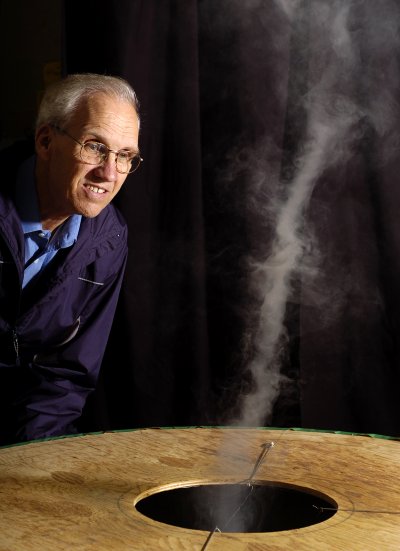
Fig. 1: Image Showing Louis Michaud with the LM 3 AVE Prototype
Whenever we hear the word “Tornado” we think of destruction and catastrophe. But, to one man it meant, “How can I generate power with that?” It makes sense. Most large scale power generation methods, directly or indirectly involve rotating parts and tornadoes possess a huge amount of rotational kinetic energy. So if we could create a tornado and harness its kinetic energy, it would effectively provide us with a clean source of energy (provided that it is controlled). Generally tornadoes are caused by the presence of a large temperature gradient present in the atmosphere. The lower atmosphere is heated up by the ground and the top layers remain cool and since hot air is lighter, it will rise upwards creating a draft. This provides for the upward vector and there are also lateral and sideward movement of wind caused by the rotation of the earth. This causes the formation of a vortex which is rising upwards. As a comparison with hydroelectric energy, raising one unit mass of warm air from the bottom to the top of the troposphere can produce as much energy produced by a unit mass of water with a potential head of 1000m.
So to recreate such a condition, Canadian inventor, Louis Michaud designed a machine which would create a controlled tornado and harness its kinetic energy due to the convective mixing to generate electricity, the “Atmospheric Vortex Engine (AVE)”. In this article, we will learn about this machine and how it works.
-
How Does it Work?
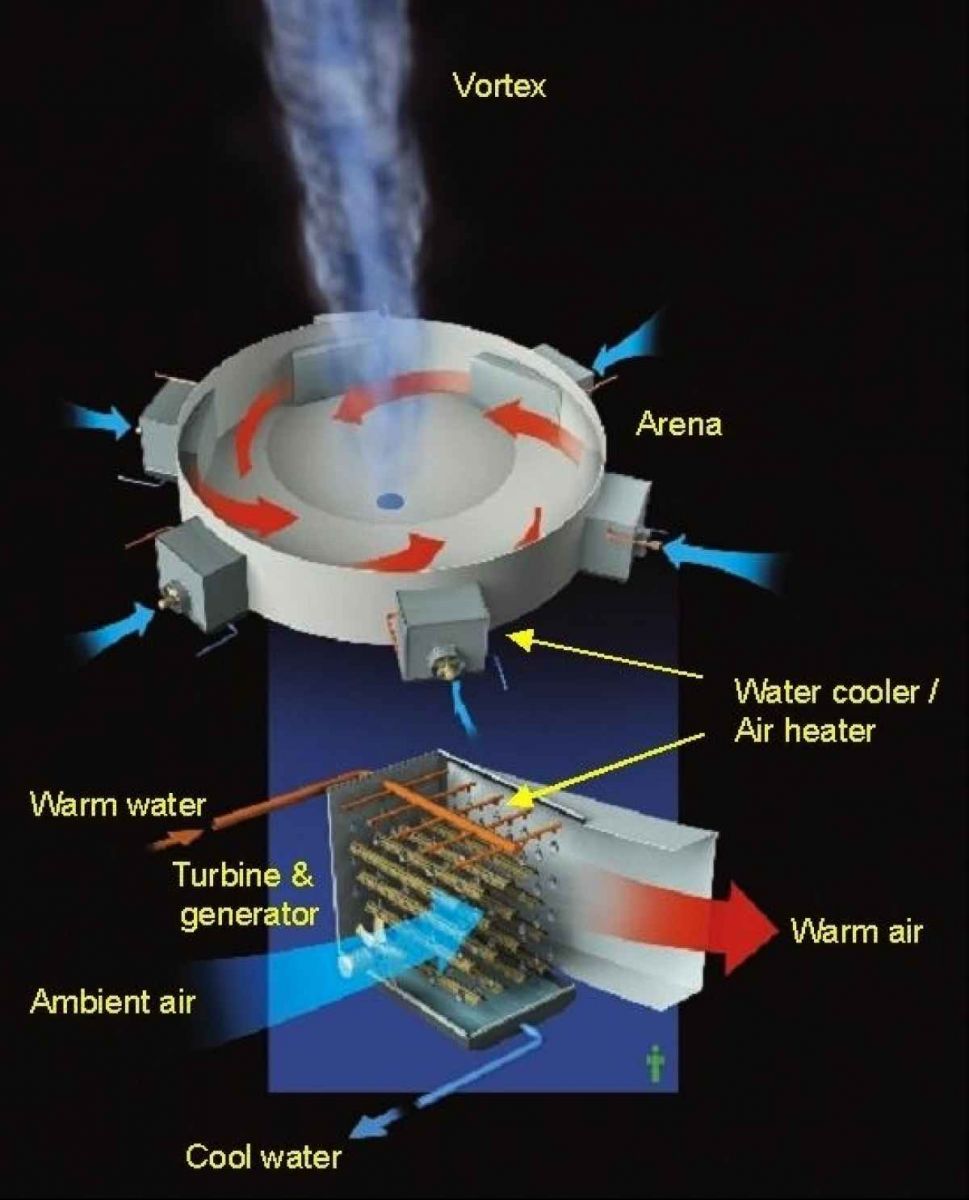
Fig. 2: Graphical Image Explaining Various Parts of an Atmospheric Vortex Engine
The basic underlying concept is that the temperature distribution in the atmosphere. The atmosphere is a boundary between the solid land of earth and the cold vacuum of outer space. It is therefore heated by the land (which is heated up by the sun) and cooled by the cold outer space. Therefore, the atmosphere runs from a hot temperature at the bottom and reduces as we go higher. This temperature is a static study of heat transfer. But, a temperature gradient in fluids causes a constant mixing. This is because of the direct relation between temperature and volume, i.e. as the temperature increases, it causes the fluid to expand (increase in volume). When the volume increase, the density decreases and therefore the gas becomes lighter and exerts a buoyant force on the upper cold atmosphere. When this force becomes greater than the downward pressure from the other layers, it causes a thermal convection mixing between the hot and cold elements. Generally tornadoes form when the temperature difference is about 200C between the ground air and the air present above causing vigorous rotational cells.
In the atmospheric vortex engine, air is initially heated in a concentric cylindrical chamber and is introduced tangentially into the central area. The heat required to sustain the vortex can be obtained from various sources like industrial waste heat, solar concentrators, warm sea water, hot springs, etc. and can be transferred to the incoming air through a heat exchanger. Cooling towers (Natural Draft type) present in industries can stand-in for the heat exchangers of an AVE. The industrial waste heat from hot flue gases can transfer it to tangentially incoming atmospheric air. According to calculations from Louis Michaud, a cooling tower having a base diameter of 200m could produce a tornado with a 50m diameter at the base and extend up to the top of the troposphere. This could produce 50 to 500 MW of power.
After being heated by multiple peripheral heat exchangers, the warm air enters at a sub-atmospheric pressure through the tangential air-entry ducts into the central area which is called the arena. The flow rate can be controlled by variable flow restrictors present either upstream of the peripheral cooling section or at the tangential entry ducts. The arena is covered with an annular roof with a central circular opening which helps the entering air to converge and form a vortex. Regarding the dimensions, the roof opening can be about 30% of the cylindrical wall, the vortex diameter can be anywhere from 10% to 50% of the roof opening diameter, the height of the arena is 30% of its diameter and the tangential entry height is half of the arena height. The floor of the arena can be made rough to optimize vortex mixing. Since we need a controlled tornado, the flow rate of the heated air can be restricted to reduce the vortex rotation speed. The rotational energy could be transferred to turbines which collect the energy through gas expansion to turn the blades which turn an electric generator.

Fig. 3: Cross-Sectional Diagram of an Atmospheric Vortex Engine
Cooling towers are usually present in thermal power plants to dump the excess heat into the atmosphere. A power plant which produces 500MW of power spews out almost 1000MW of power as waste heat. Coupling a natural draft cooling tower with a vortex engine would increase the power output of the plant to 700MW, therefore saving 20% of wastage heat (200MW out of 1000MW) and increasing power output by 40% (500MW to 700MW). These vortices could potentially rise to 15km into the atmosphere.
Prototype Results
-
Prototype Results
The concept was tested to confirm the vortex formation using a prototype made out of plywood, which was 100 cm in diameter and 60cm high. It had 8 tangential inlet deflectors and the air was heated to 200C and made to enter a 30cm high arena. To visualize the vortex, smoke emitters were used. The vortex looked like a mini tornado and extended to 200cm above the roof. The roof diameter was 30 cm and the tornado’s base diameter was 10cm. A CFD model of the vortex formed (using FLUENT software) is shown below.
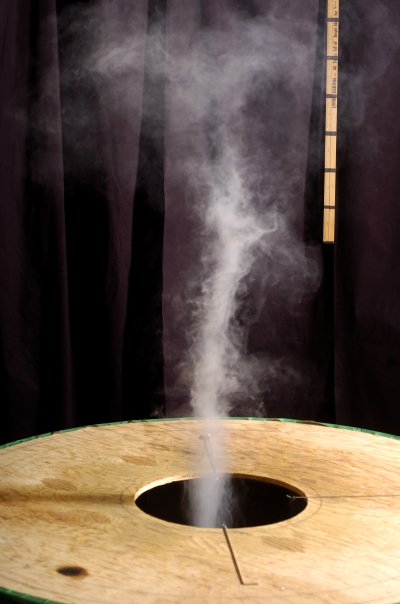
Fig. 4: Figure Showing LM 3 Prototype
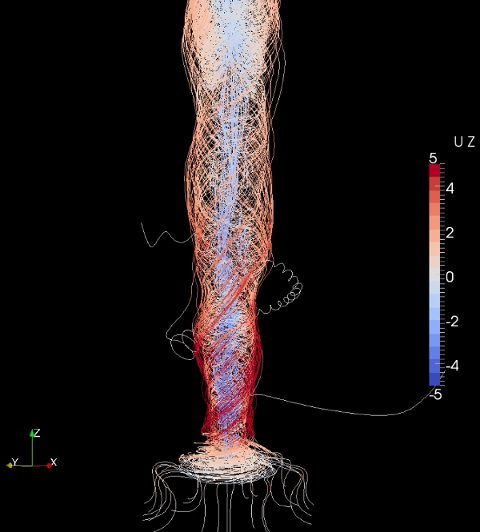
Fig. 5: CFD Model of the Vortex Formed Inside Atmospheric Vortex Engine
-
Safety Concerns
The biggest concern which anyone has is that of an uncontrolled tornado forming which will travel laterally out of the engine platform. Michaud claims that this possibility is highly unlikely since the tornado is being fed only by the air from the tangential ducts and therefore will die out if the flow is stopped. There will be multiple redundancies in place to restrict the flow present in multiple locations. He says that this would be somewhat be similar to the various amounts of safety measures in place in nuclear power plants to avoid a plant meltdown.
In fact it is possible to use AVEs to increase safety against naturally occurring tornadoes by extracting ambient heat and preventing the formation of a large temperature gradient.
-
The Future of AVE
Louis Michaud came out of retirement to restart his adventure by creating an innovative alternative source of energy through the AVE which was patented in the year 2005 in Ontario, Canada. Later he founded the company AVEtec which is being funded by the Thiel Organization b PayPal cofounder, Peter Thiel. Breakout Labs, a branch of the Thiel Organization, founded in 2011, found AVEtec to be a viable candidate to receive a $300,000 grant to work on their AVE research. In partnership with Lambton College in Ontario, Michaud and his team are building a large prototype capable of producing a 26 meter wide, 100 meter high vortex working to rotate a 1 meter turbine on their campus to demonstrate the power producing potential of the AVE.
Before shifting to a completely green source of energy there has to be a transitional phase and AVE could be the answer on how we move from fossil fuels to completely pollution free energy. The AVE coupled with either fossil fuel plants or the clean green technologies (nuclear power plants, fusion reactors, solar generators, ocean energy, etc.) could increase the productivity of the plants as well reduce the demand for fossil fuels to a great extent while meeting the energy needs of the people of the planet and more.
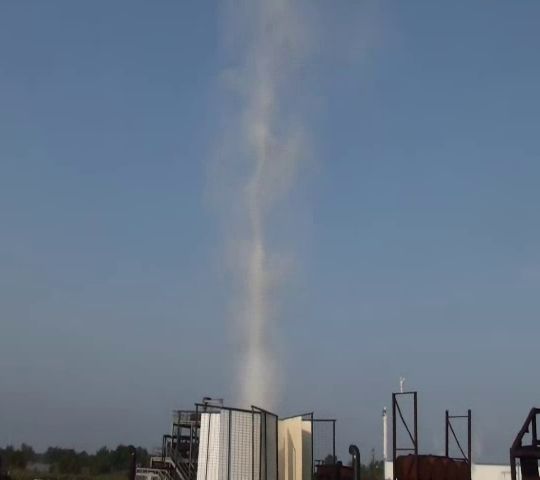
Fig. 6: LFS Prototype of Atmospheric Vortex Engine at the Lambton College
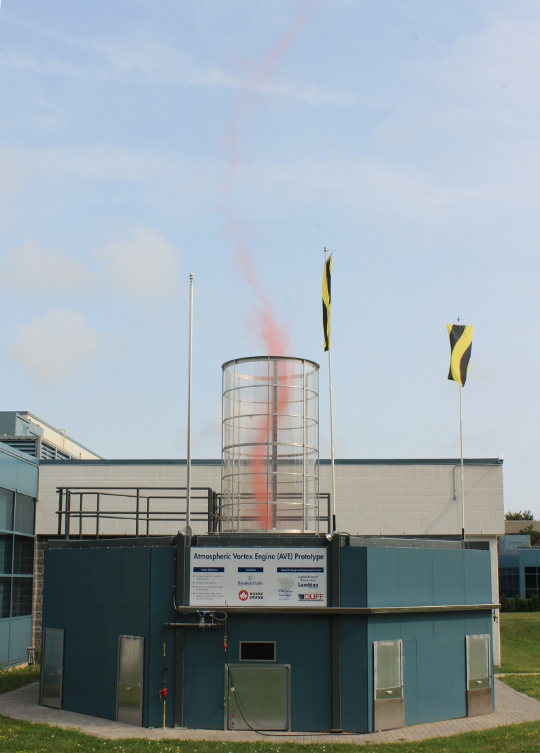
Fig. 7: Image of Breakout Labs Located in Ontario Canada
Filed Under: ARM., Tech Articles


Questions related to this article?
👉Ask and discuss on Electro-Tech-Online.com and EDAboard.com forums.
Tell Us What You Think!!
You must be logged in to post a comment.